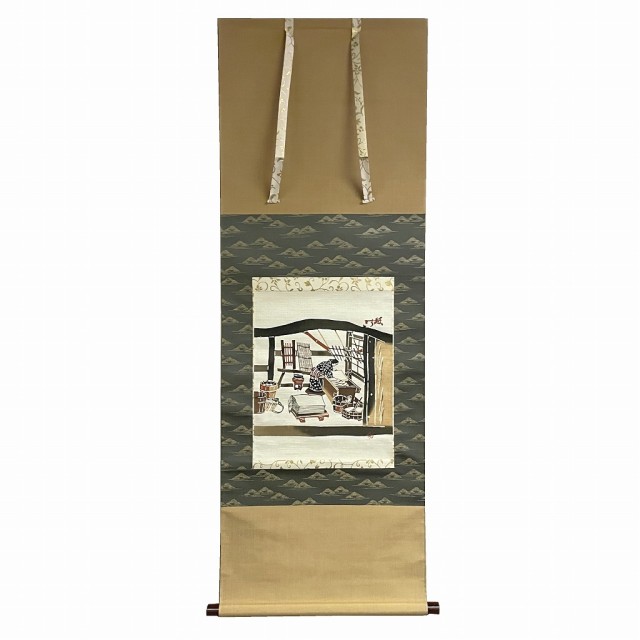
SOLD
Ink on Silk
with a signed box
Showa period
living national treasure
D46cm H137cm
The motif of this work is the scenery of Ogawamachi, Saitama Prefecture, where Japanese paper is produced. In 1935, Serizawa was commissioned by the Ogawa Papermaking Research Institute, where he taught paper making. During his visits, Serizawa created this work with scenes from the town of Ogawa. The clear stream that is indispensable for papermaking flows through the town, and the mountains are tinted with cherry blossoms. The clear stream, essential for papermaking, and the cherry-tinted mountains suggest that he created this work with the scenery of Ogawamachi in mind in the spring. A similar work is shown in "Serizawa Keisuke Complete Works, Volume 20" and "Serizawa Keisuke's Works II: Folding Screens.
Keisuke SERIZAWA
1895 – 1984
He was a Japanese textile designer. In 1956, he was designated as a Living National Treasure by the Japanese government for his katazome stencil dyeing technique. A leading member of the mingei movement founded by Yanagi Sōetsu, Serizawa visited Okinawa several times and learned the Ryūkyū bingata techniques of dyeing. His folk-art productions included kimono, paper prints, wall scrolls, folding screens, curtains, fans, and calendars.
In 1981, the Municipal Serizawa Keisuke Art Museum was opened in the city of Shizuoka. Other museums that hold his work include the Brooklyn Museum, the Metropolitan Museum of Art, the Harvard Art Museums, the Seattle Art Museum, the British Museum, the University of Michigan Museum of Art, and the Museum of New Zealand.
Contact about the Item
